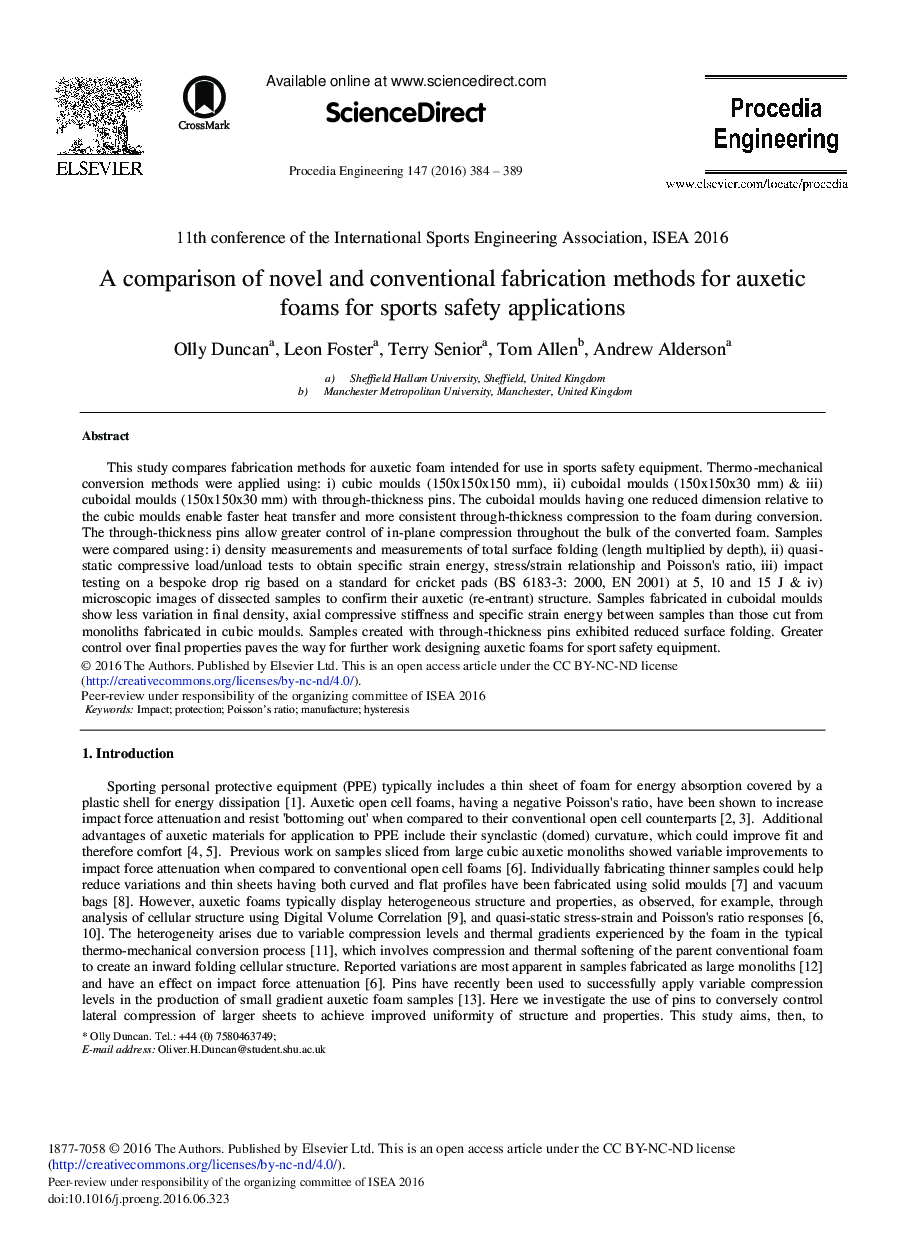| Article ID | Journal | Published Year | Pages | File Type |
|---|---|---|---|---|
| 853412 | Procedia Engineering | 2016 | 6 Pages |
This study compares fabrication methods for auxetic foam intended for use in sports safety equipment. Thermo-mechanical conversion methods were applied using: i) cubic moulds (150x150x150 mm), ii) cuboidal moulds (150x150x30 mm) & iii) cuboidal moulds (150x150x30 mm) with through-thickness pins. The cuboidal moulds having one reduced dimension relative to the cubic moulds enable faster heat transfer and more consistent through-thickness compression to the foam during conversion. The through-thickness pins allow greater control of in-plane compression throughout the bulk of the converted foam. Samples were compared using: i) density measurements and measurements of total surface folding (length multiplied by depth), ii) quasi-static compressive load/unload tests to obtain specific strain energy, stress/strain relationship and Poisson's ratio, iii) impact testing on a bespoke drop rig based on a standard for cricket pads (BS 6183-3: 2000, EN 2001) at 5, 10 and 15 J & iv) microscopic images of dissected samples to confirm their auxetic (re-entrant) structure. Samples fabricated in cuboidal moulds show less variation in final density, axial compressive stiffness and specific strain energy between samples than those cut from monoliths fabricated in cubic moulds. Samples created with through-thickness pins exhibited reduced surface folding. Greater control over final properties paves the way for further work designing auxetic foams for sport safety equipment.
